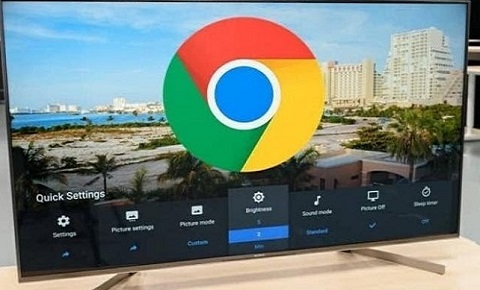The invention and development of television represent one of the most transformative technological advancements of the 20th century. But when was the first television sold to the public? To answer this question comprehensively, we must journey back to the early days of television’s invention, tracing its evolution from experimental prototypes to the consumer-ready sets that revolutionized home entertainment.
The Pioneering Years: Early Television Development
The history of television dates back to the late 19th century when inventors and scientists began exploring the possibility of transmitting images and motion over long distances. Several key milestones contributed to creating the television sets we know today.
The Mechanical Television: In the late 19th and early 20th centuries, inventors like Paul Nipkow, Boris Rosing, and Charles Francis Jenkins experimented with mechanical television systems. These systems used rotating disks with perforations to scan and transmit images. While these early experiments laid the groundwork for television technology, they were far from today’s practical TVs.
The Electronic Television: The breakthrough that paved the way for modern television came with the invention of the electronic television. Two inventors, Philo Farnsworth and Vladimir Zworykin, independently developed electronic systems that used cathode-ray tubes (CRTs) to capture and display images. Farnsworth created the first working electronic television system in the 1920s.
The First Public Demonstrations: The early 1920s witnessed the first public demonstrations of television. These demonstrations, while rudimentary, captivated audiences and demonstrated the potential of electronic television. However, these were still experimental prototypes rather than consumer products.
The Transition to Commercial Television: The 1930s
The 1930s marked a significant turning point in the history of television as the technology transitioned from experimental demonstrations to commercial applications. Here are key developments from this period:
BBC’s First Public Broadcast: In 1930, the British Broadcasting Corporation (BBC) made its first public television broadcast using John Logie Baird’s mechanical television system. This event began regular television broadcasts, primarily in the United Kingdom.
Philo Farnsworth’s Patent Battles: Philo Farnsworth’s electronic television system faced legal battles over patents, delaying its commercial development. RCA, led by David Sarnoff and Vladimir Zworykin, was a key player in these patent disputes.
The 1936 Olympics: The Berlin Olympics 1936 marked a major milestone in television history. The Games were broadcast to specially equipped viewing rooms in Berlin and London, showcasing the potential of television as a mass medium. This event prompted greater interest and investment in television technology.
The Emergence of Consumer Television Sets: The Late 1930s and Early 1940s
While television technology continued to develop, it was in the late 1930s that the first consumer-ready television sets became available for purchase. These early TVs were a far cry from the sleek, high-definition displays we have today. They had small screens, limited channels, and were expensive luxury items. Here’s a closer look at this crucial period:
The First TV Stations: In the United States, experimental television broadcasts occurred in the 1930s. By 1939, the Federal Communications Commission (FCC) had established standards for commercial broadcasting, and the first regular TV stations began airing in major cities like New York and Philadelphia.
The Introduction of RCA’s TRK-12: In 1939, RCA (Radio Corporation of America) introduced the TRK-12, one of the first television sets available to consumers. It had a 12-inch screen and a price tag of $600, equivalent to several thousand dollars today. The TRK-12 was a milestone in making television accessible to the public.
World War II and a Pause in TV Production: The outbreak of World War II in 1939 put a temporary halt to television production as manufacturers shifted their focus to wartime efforts. Television sets were in limited supply during the war years.
Post-War Television Boom: The Late 1940s and 1950s
After World War II, the television industry experienced a significant post-war boom, leading to the mass adoption of TV sets in households across the United States and other parts of the world. Several factors contributed to this boom:
Improved Technology: Television technology advancements led to better picture quality and larger screens. The introduction of color television in the 1950s added a new dimension to home entertainment.
The Golden Age of Television: The 1950s is often referred to as the “Golden Age of Television.” It saw the rise of popular TV shows, including classics like “I Love Lucy,” “The Honeymooners,” and “The Twilight Zone.” These shows played a pivotal role in driving TV adoption.
Price Reductions: As production techniques improved and demand increased, the cost of television sets began to drop, making them more affordable for the average consumer.
Expansion of Networks: The number of TV stations and networks grew substantially during this period, offering a wider range of programming and news coverage.
Television Advertising: Advertisers recognized the potential of television as a powerful medium for reaching consumers. Television advertising was crucial in funding and sustaining the industry’s growth.
The Global Spread of Television: The 1950s and Beyond
By the 1950s, television had become a global phenomenon, with countries launching their television networks and producing local content worldwide. The availability of television sets continued to increase, leading to a cultural shift in entertainment and information consumption.
Television in Europe: European countries established television networks in the 1950s and 1960s. The BBC in the United Kingdom, the ORTF in France, and ARD in Germany pioneered European television broadcasting.
Television in Asia: Asian countries like Japan and South Korea embraced television in the post-war era. The introduction of color television and local content production contributed to its popularity.
Television in Developing Nations: Television technology also spread to developing nations, often with the support of international organizations and partnerships. It played a role in education, information dissemination, and cultural exchange.
Cable and Satellite TV: The late 20th century saw the emergence of cable and satellite television, offering viewers access to a broader range of channels and content. This further expanded the reach of television.
Digital Revolution: The transition from analog to digital television, which began in the late 20th century and continued into the 21st century, improved picture and sound quality while enabling additional channels and interactive features.
Television in the 21st Century: High-Definition, Smart TVs, and Streaming
The 21st century brought significant advancements in television technology, transforming the viewing experience:
High-Definition (HD) TV: High-definition television became the new standard, offering sharper and more detailed images. It replaced standard-definition (SD) TV, and consumers began purchasing HDTV sets.
Smart TVs: Smart TVs, equipped with internet connectivity and built-in apps, revolutionized how viewers access and interact with content. Platforms like Samsung’s Tizen, LG’s webOS, and Sony’s Android TV became common.
Streaming Services: The rise of streaming services, including Netflix, Amazon Prime Video, Hulu, and Disney+, changed how people consume content. Streaming devices like Roku, Apple TV, and Amazon Fire TV became popular for accessing these services.
Ultra High-Definition (4K and 8K) TVs: Ultra HD TVs with 4K and 8K resolutions offered even more immersive and detailed viewing experiences, ideal for larger screens and home theater setups.
The Smart Home Integration: Modern TVs are often part of the smart home ecosystem, allowing users to control lighting, thermostats, and other devices through voice assistants like Amazon Alexa and Google Assistant.
Conclusion
The journey from the first television experiments in the late 19th century to the advanced TV technology of the 21st century is a testament to human ingenuity and innovation. While the early TV sets were luxury items, today, television is a ubiquitous and essential part of our lives, offering entertainment, information, education, and connectivity. The first television sold to the public marked the beginning of a transformative era that continues to shape our world today. Television’s evolution is ongoing, with advancements such as 8K resolution, OLED displays, and innovative content delivery methods promising even more exciting developments in the future.






